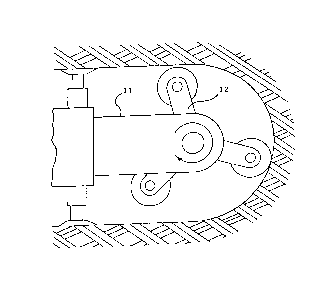Une partie des informations de ce site Web a été fournie par des sources externes. Le gouvernement du Canada n'assume aucune responsabilité concernant la précision, l'actualité ou la fiabilité des informations fournies par les sources externes. Les utilisateurs qui désirent employer cette information devraient consulter directement la source des informations. Le contenu fourni par les sources externes n'est pas assujetti aux exigences sur les langues officielles, la protection des renseignements personnels et l'accessibilité.
L'apparition de différences dans le texte et l'image des Revendications et de l'Abrégé dépend du moment auquel le document est publié. Les textes des Revendications et de l'Abrégé sont affichés :
| (12) Brevet: | (11) CA 1334842 |
|---|---|
| (21) Numéro de la demande: | 1334842 |
| (54) Titre français: | SYSTEMES POUR FORCER DES MINERAIS |
| (54) Titre anglais: | SYSTEMS TO DRILL MINERALS ETC... |
| Statut: | Périmé et au-delà du délai pour l’annulation |
| (51) Classification internationale des brevets (CIB): |
|
|---|---|
| (72) Inventeurs : |
|
| (73) Titulaires : |
|
| (71) Demandeurs : |
|
| (74) Agent: | SMART & BIGGAR LP |
| (74) Co-agent: | |
| (45) Délivré: | 1995-03-21 |
| (22) Date de dépôt: | 1988-03-10 |
| Licence disponible: | S.O. |
| Cédé au domaine public: | S.O. |
| (25) Langue des documents déposés: | Anglais |
| Traité de coopération en matière de brevets (PCT): | Non |
|---|
| (30) Données de priorité de la demande: | S.O. |
|---|
System for drilling minerals, rocks and others of
that kind with the use of rotating disk- or slab-
tools, therewith characterized , that the material to
be drilled will be axcavated - as the case may be
pre-cut / reliefed - chiefly in a frontal advance
direction, but also radially from the inside to the
outside - layerwise undercut and always breaking into
the free space. In combination hereto a process-
patent is demanded for a propulsive aggregate being
autonomic by supporting itself on the pre-worked /
pre-cut excavating front - or rather being lead on it
or through it and keeping this way a constant
undercutting depth.
Note : Les revendications sont présentées dans la langue officielle dans laquelle elles ont été soumises.
Note : Les descriptions sont présentées dans la langue officielle dans laquelle elles ont été soumises.

2024-08-01 : Dans le cadre de la transition vers les Brevets de nouvelle génération (BNG), la base de données sur les brevets canadiens (BDBC) contient désormais un Historique d'événement plus détaillé, qui reproduit le Journal des événements de notre nouvelle solution interne.
Veuillez noter que les événements débutant par « Inactive : » se réfèrent à des événements qui ne sont plus utilisés dans notre nouvelle solution interne.
Pour une meilleure compréhension de l'état de la demande ou brevet qui figure sur cette page, la rubrique Mise en garde , et les descriptions de Brevet , Historique d'événement , Taxes périodiques et Historique des paiements devraient être consultées.
| Description | Date |
|---|---|
| Inactive : CIB de MCD | 2006-03-11 |
| Inactive : CIB de MCD | 2006-03-11 |
| Inactive : CIB de MCD | 2006-03-11 |
| Le délai pour l'annulation est expiré | 2005-03-21 |
| Lettre envoyée | 2004-03-22 |
| Inactive : Grandeur de l'entité changée | 2003-04-03 |
| Inactive : Grandeur de l'entité changée | 1999-12-14 |
| Accordé par délivrance | 1995-03-21 |
Il n'y a pas d'historique d'abandonnement
| Type de taxes | Anniversaire | Échéance | Date payée |
|---|---|---|---|
| TM (catégorie 1, 3e anniv.) - générale | 1998-03-23 | 1997-10-24 | |
| TM (catégorie 1, 4e anniv.) - générale | 1999-03-22 | 1998-11-03 | |
| TM (catégorie 1, 5e anniv.) - petite | 2000-03-21 | 1999-12-06 | |
| TM (catégorie 1, 6e anniv.) - petite | 2001-03-21 | 2000-11-28 | |
| Annulation de la péremption réputée | 2001-03-21 | 2000-11-28 | |
| TM (catégorie 1, 7e anniv.) - petite | 2002-03-21 | 2001-10-29 | |
| TM (catégorie 1, 8e anniv.) - générale | 2003-03-21 | 2003-03-21 |
Les titulaires actuels et antérieures au dossier sont affichés en ordre alphabétique.
| Titulaires actuels au dossier |
|---|
| HANNELORE BECHEM |
| Titulaires antérieures au dossier |
|---|
| DIETER LENZEN |
| KLAUS BECHEM |
| PHILIP BECHEM |
| ULRICH BECHEM |